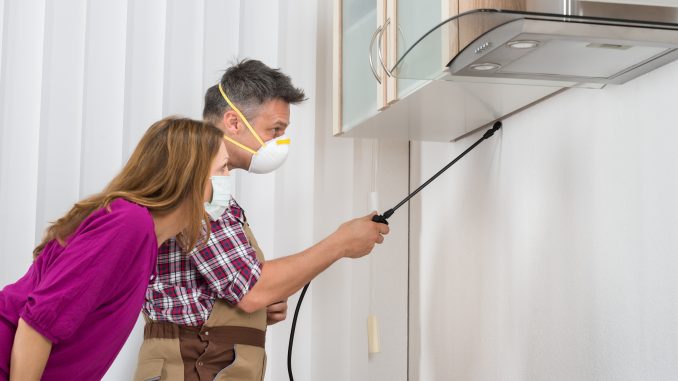
Pest control is the management of a species of the animal kingdom that adversely affects human activities defined as pests. The human response depends on the damage done, ranging from tolerance and management in the process of complete eradication of pests. The measures employed, therefore, form an integrated pest management stratagem. Not only pests affect humans but also plants, animals, and food. Different types of pests include flies, fleas, rats, mosquitoes, fungus, termites, and feral dogs. These pests affect the quality of human life and cause diseases; therefore, controlling them is necessary. Below are the pest control methods.
Biological method
The biological method is mostly used in greenhouses, and it involves the introduction of pests’ natural predators, parasites and pathogens to geographically alter pest’s ability to breed. These natural enemies feed on pests’ larvae, therefore, reducing their growth and spread. This method is environmentally safe, unlike the use of pesticides that may potentially cause pollution. For the biological pest control method to work effectively, the use of appropriate species under proper conditions is mandatory.
Use of chemicals
There is a myriad of chemical pesticides used to control pests in homes, offices, and farms. They are available in solid, liquids and aerosol forms categorized according to the type of pests they control. Herbicides are used to control weeds, bactericides for bacteria, and insecticides for insects. The use of chemicals kills pests through oral entry, dermal entry, and respiratory entry. Before applying the pesticides, it is recommendable to read all the labels and avoid contaminating uncovered utensils, food, and drinks. When the task becomes challenging, consider calling pest exterminator professionals to do the job for you. They have the right knowledge and skills to exterminate pests once for all.
Hygienic Control
Ideally, fewer pests can be found in clean places. As such, ensure no food remains on floors, cupboards, and lawns to attract pests. Hygienic practices close the pest venues for growth and reproduction both in homes and offices. Throw away food leftovers, wash dishes after use, and use secured bins. Ensure all food containers are properly covered, flush toilets after use, seal septic tanks, pipes, drains, and holes. Clear debris and weeds from gardens, use natural fertilizers and fresh mulches. All these strategies lower the chances of attracting pests. It offers a long term pest control solution, unlike the use of chemicals that is short term.
Physical Methods
Physical methods involve trapping and killing of pests such as rodents. They can be trapped using sticky flypapers, pheromones, volatile synthetic chemicals, and ultraviolet lights to attract them to electrically charged grids. Glue boards at times are used to monitor and catch rodents and cockroaches. Besides, suitably baited spring traps can be used to bait rodents. Talcum powder is used to trace rodents’ routes besides detecting beetles in timbers.
Overall, pests are generally a nuisance to humans and affect the quality of human life. Some have disease-causing bacteria and viruses. For these reasons, they must be controlled using the appropriate methods. Use pest control services to control pests for the best interest of your family, pocket, pets, and the environment at large.




